* (restored)
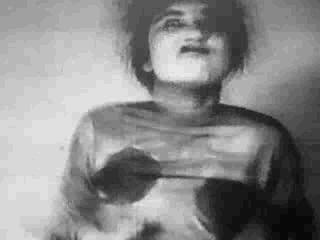
‘More than 30 years after her death, admirers pay tribute to one of Germany’s most enigmatic – and overlooked – artists, dancer and actress Valeska Gert. She’s said to have laid the foundations for the punk movement.
‘”I saw her on television in 1977 when she was 86 and I thought, she has short hair, a colorful dress, she’s tough and living in the present, she’s a real punk because she doesn’t care about her image,” said artist and musician Wolfgang Mueller at the opening night of a new exhibition dedicated to Valeska Gert. The show in Berlin’s Hamburger Bahnhof coincides with the launch of a Mueller’s new biography on the performer. “When she died in 1978 people took care of her letters and found correspondence from punks who said, we would like to know you and to meet you,” he said.
‘Indeed, Valeska Gert’s appearance on a TV talk show in the late 1970’s re-ignited interest in one of Germany’s most enigmatic artistic figures. Her acceptance, at the age of 86, by the burgeoning punk movement is as much a testament to her brash, no-nonsense energy as it is to her artistic achievements. Since then she has remained a marginal curio.
‘Gert was born Gertrud Valesca Samosch to a Jewish family in Berlin in 1892. Showing no interest in academia, Gert began taking dance lessons at the age of nine, and by 1915 was studying acting with Alexander Moissi. Her leanings toward the performing arts, combined with the detrimental effects of World War I on her father’s finances, led her to seek employment and she soon made appearances at the Munich Kammerspiele, the Deutsches Theater and the Berliner Tribuene.
‘As the 1920’s progressed, she also began appearing in silent cinema, performing in The Threepenny Opera, Diary of a Lost Girl with iconic flapper Louise Brooks, and G. W. Pabst’s Joyless Street.
‘It was around this time that Gert unveiled one of her most enduring performance works. Entitled “Pause,” it was an interpretative anti-dance performed between reels in cinemas, designed to draw attention to stillness and serenity. “It was so radical just to go on stage in the cinema stand there and do nothing,” said Wolfgang Mueller, “She did this in the 20’s where the convention was speed, business, activity and you see this in the films of the 20’s: big cities, traffic, nervosity. To go out there and do the complete opposite was very, very modern.”
‘By 1933, with the Nazis in power, Gert suffered a ban from the German stage due to her Jewish heritage. She moved to London where she continued to perform on stage and appeared in the experimental short film Pett and Pot directed by Alberto Cavalcanti. It would be her last film work until her triumphant return to the cinema in the mid-1960’s.
‘By 1938, in her late 40’s and living in New York but, Gert found it virtually impossible to revive her previous career. She lived on the welfare of a Jewish refugee community, washed dishes and posed as a nude model. In 1941, she opened the Bettlerbar (Beggar’s Bar), a ramshackle cabaret/restaurant filled with mismatched furniture and staffed by the likes of Jackson Pollock and Tennessee Williams, the latter being fired by Gert for being “too sloppy.”
‘Although licensing requirements forced the New York bar to close, Gert introduced the concept to Germany upon her return in 1950. It has proved perhaps her most enduring legacy; tumbledown bars furnished with random pieces of flea-market chic and junk store accessories have since become legion in Berlin, a fad started by Gert which Wolfgang Mueller terms “freedom from taste.”
‘Back in post-war Berlin, she once again had to start from scratch. In the same 1977 television show, the interviewer tactfully suggested that by the dawn of the 1950’s Gert was perhaps not so well remembered as before. With typical self-depricating humor and bluntness typical for Berliners, she exclaimed, “Not so well remembered? I was totally forgotten!”
‘She opened the Hexenkueche (Witch’s Kitchen) cabaret and made a triumphant return to the silver screen with an appearance in the 1965 surrealist drama Juliet of the Spirits, directed by Frederico Fellini. She was soon cast in other high profile projects by Rainer Werner Fassbinder’s and Volker Schloendorff.
‘While Valeska Gert has had a small but solid fan base, widespread fame always eluded her and, especially in the intervening years, she has become very much a marginalized character. “I think she is a bit invisible,” said Wolfgang Mueller, “She is not known because she always ignored borders. She was always far away from these boxes that the art scene puts people in.”‘ — Gavin Blackburn, DW
____
Stills
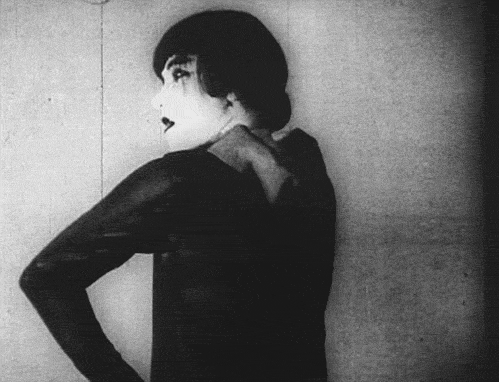
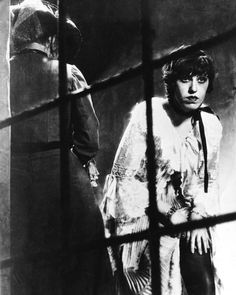
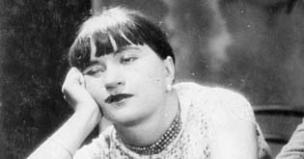
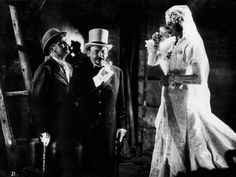
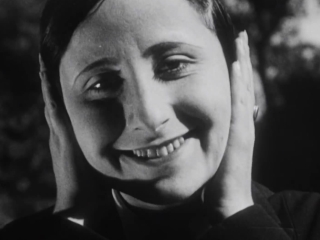
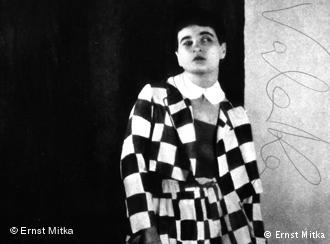
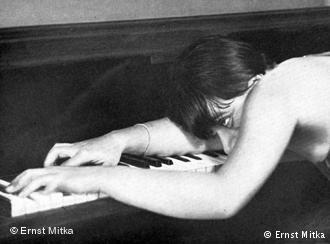


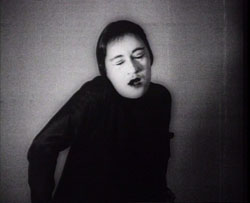

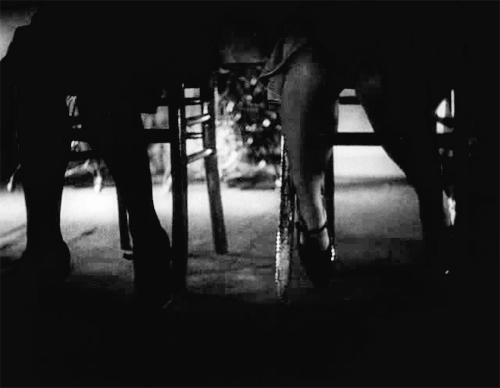













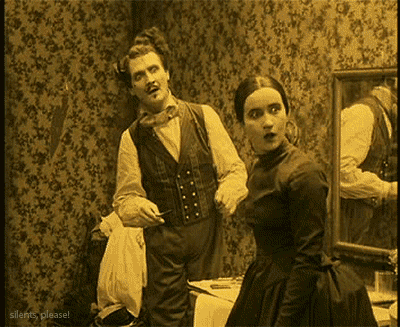



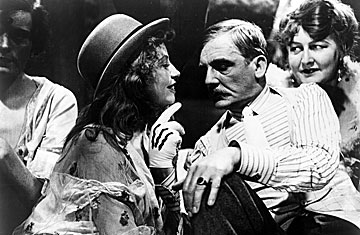








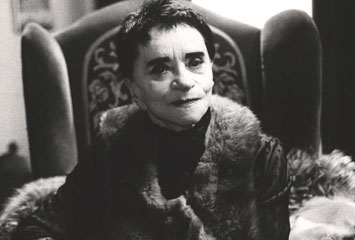









____
Further
Valeska Gert @ Wikipedia
The grotesque burlesque of Valeska Gert
Valeska Gert’s Performances in the Context of Weimar Culture
Volker Schlöndorff: Portrait of Valeska Gert
The Remarkable Life of Valeska Gert
Back to the Future of the Body
Valeska Gert: The great grotesque pantomime
DURING THE PAUSE
Valeska Gert @ MUBI
Valeska Gert @ The Criterion Collection
VALESKA GERT’S BEGGAR BAR
L’excentrique Valeska Gert
Dancing Out of Bounds: Valeska Gert in Berlin and New York
«Kaleidoskop meines Lebens»: Valeska Gert’s Performances of the Self
‘Dada Gert’ A Tribute To Renegade Cabaret Artist Valeska Gert
L’HORIZON OVIPARE: Valeska Gert
illustres illustrateurs : Jeanne Mammen, période Weimar (1914-1933)
A Different Drum: Valeska Gert and Tennessee Williams
_____
Extras
Valeska Gert — Die Frau im Taumel des Lasters
Valeska Gert bei Je später der Abend 1975
Die Valeska Gert Story / Hörbuchausschnitt
Valeska Gert 1918
Valeska Gert Der Tod
_________
Curating Valeska Gert: Ana Isabel Keilson in conversation with Wolfgang Muller and An Paenhuysen
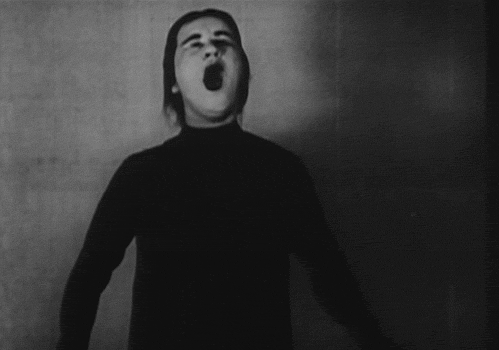
Ana Isabel Keilson: Today is the 14th of July 2011. Can you both introduce yourselves? Say how you met and then we can just kind of go from there. An Paenhuysen: My name is An Paenhuysen. I’m from Belgium. I’ve been living in Berlin for a while now. I’m a curator and historian. I met Wolfgang his show, Séance Vocibus Avium. Then we curated the show of Valeska Gert together, and now we’re working on a new project. Wolfgang Müller : Yes. We fell in love. (All laugh). An: Love at first sight. Wolfgang: Mental love. Sounds horrible! Ana: Why Wolfgang? (They are interrupted by a phone call) Ana: [Wolfgang] You can introduce yourself too. Wolfgang: I grew up in a small village in Wolfsburg in this city where you don’t get an identity by birth, or some kind of no-identity. I saw it after awhile as a chance to look at where something like identity, or personality is built on. [To see] what is there, and what you can create. This is a theme I was always interested in: cognition. When I was kicked out of school, I moved to Berlin, and then to West Berlin, which was a very nice place. Ana: When was this? Wolfgang: 1979. West Berlin was a very interesting place because a wall surrounded it, and it was only reachable from West Germany. You had to cross East Germany, the Communist part of the country. In West Berlin, you had a half-city with coal heating, toilet outside upstairs. It was really not so modern. But this means that you could live very cheap. And you didn’t have to go to the army if you went to West Berlin. This was a very good area to create something where you didn’t have to think of how you can make a profit out of it. Just create an idea, a concept. When you’re 20, you’re not a professor. You’re not somebody who is in an institution who has ten years time for making a research towards a master or post, or something like that. Time is money in that way. Here was a kind of free space because money was not so important. This is changing now. An: Yeah. But it still has this a little bit, no? People are always at the cafes. People seem to have more time here, or are taking more time. Not this work pressure. In Belgium you have to make a career, and it goes very fast. Ana: Same in New York. There’s a lot of pressure. So then I’m curious. What do you perceive as things that happened as a result of that? In the seventies, moving into the 80’s–and maybe trying to bring Veleska Gert into this–did you feel like there was an awareness among the people here that this was a special place to be? Wolfgang: Don’t forget that she was an outsider. She came back after the war, and had a little flat in West Berlin. I have a magazine from ’66, a video I can show you, where hippies, freaks and Gert are part of it. She was really part of a subculture. There were a lot of gay people there, like Herbert Tobias, a photographer who photographed Nico, and also Gert. He was together with her. There were a lot of outsiders in West Berlin. West Berlin was till the end of the wall, attracting just these people from all over the world. There were Americans, people who can’t stand America for some reason, they moved to West Berlin. Also Italians and French people and English people from everywhere. The art business wasn’t interesting. The galleries and so on were very conservative, but the atmosphere was very open-minded. The city, the general life was open. An: But in the case of Valeska Gert. It’s not just about the outsider or about recovering strange people and freaks. Ana: People know about Mary Wigman who very much is able to fit into those categories, and people don’t know about Gert. There is any number of artists, things that happen, events that take place. People don’t hear about it because they’re very particular or they happen in a specific place with a specific group of people, and it can’t get broadcast in the same way. As a historian, my interest in some ways is not saying, for example, “these people are deaf. Let’s fetishize them. Or, aren’t they crazy and weird?” But it’s that they have a certain kind of knowledge that most people don’t know about. So what’s the act of recovery that has to happen in other forms of communication or with other kinds of interested parties that share this information in a different way? I think that was more my point. I think that your interest in Gert isn’t because you want to make a discovery of this lost artist. Wolfgang: I think Valeska, she did really an art which is still not dead because she works just between the schools. She doesn’t solve things. When she performed “Baby”, and she has the old face, of course she knows that it’s grotesque. You see it when she’s performing and afterward, when she’s finished, you see this old woman, 75 years old who just did a performance. She makes a cut, a border, a wall. It’s very important. People assume she is that way [and not performing]. If she performed in the 20’s as a prostitute having an orgasm, then people think, “Oh, she must be very open-minded.” Of course she was, but it doesn’t mean that she had sex with everybody. This is a big misunderstanding. Ana: Right. But there’s a practical level to it too, which is the art that we have of Gert’s. We have these fragments, a couple videos, some visual images, letters and other kinds of things. But if people don’t get to see these videos, then they don’t know what you’re talking about. Wolfgang: That’s why we publish it. An: It’s also a way of presenting. You can dig up all this stuff from the 80’s and present it in many ways. With Valeska Gert. It was very important for us the way that we presented her work. It was about concepts. Wolfgang: Not [only] historical. An: It’s in the vein of contemporary art. It’s not about her life that’s about [being] a baby, young, and then old. Wolfgang: It had nothing to do with the time, in fact. If a young performer would do the same now, it would be also good. An : But it would be easy for Valeska Gert to be shown as a prostitute and then an older grotesque dancer, or as a woman dancer. We had to discuss lots how we present her, because still today this was in one room and it was “Works made by Women” from the collection. Still today, the way we perceive art–we act as if the contemporary art world is free of hierarchies. If we go inside and we see a woman who works with the body and does the prostitute thing, we have right away this frame. So we tried to have another frame there for how people watch her work and to see the concept of her work. She happened to use her body, but that was not the main thing for us. Wolfgang: I mean everyone has a body, but she used the body as an instrument. This is something that people don’t notice. They think you are the body. They couldn’t imagine that somebody would make a performance and stay behind or next to this body. She doubled it in a way. This doubling is so interesting. She is not like Mary Wigman, who found a form and then built it to become a Gesamtkunstwerk. This is something else. Valeska makes deconstruction a big key of the work. It’s not deconstruction. It’s deconstruction–with construction. Very important. For instance, it’s not like Einsturzende Neubauten. The punk world was such that we destroyed the stages. I think this is déconstruction, word by word taken. For me it was always interesting to imagine Neubauten would play on stage, destroying and playing the big evil man, and then in the background you see a recommendation from the Berlin Senate, “please support for our American tour.” This is how this band from Germany made high art. Ana: But I think that also takes a certain kind of self-reflexivity, or a self-awareness or self-consciousness. Like with everything you’re saying about Gert. She’s not stupid. She gets what she’s doing. One minute she’s this baby that’s–call it grotesque, call it disarming, and then she makes a break and is this old woman. She gets that she’s in control. She gets that that juxtaposition of the two is part of what she’s channeling in the work. I’m curious to hear you both speak a little more about the curatorial aspect and also the scholarship side because you’re both scholars. Scholarship has it’s own position in this kind of cultural landscape. [Scholars] as participants, viewers, audience and activists. I believe that scholars are activists, and maybe that’s why I keep going back to this idea of recovery, historical recovery. You’re saying that you didn’t want the Hamburger Bahnhof exhibition to be historical, and that it was more about ideas in her work as a female artist. How do you structure a situation in which that can happen, because I think that from my perspective, it’s hard to say that an exhibition at a museum about someone like Valeska Gert isn’t historical to some extent. An: Is it historical? Ana: It is historical in the sense that she’s dead, she’s not living. She’s not very well known. Part of it is just about giving access to what she did. She worked with very famous people. She was an important actor in a moment to groups of people. Wolfgang: Historical in that way, I would say. We plan not to make some kind of “This was Valeska, she’s grown up there and there.” There is an introduction to her work in a historical context at the front of the exhibition. But within the exhibition, we displayed in a way that was more about concepts than a timeline. We put her work in communication with Marcel Duchamp’s work, or Marcel Broodthaers or VALIE EXPORT. VALIE EXPORT is still alive, but all these other artists are dead, and are/were more or less her generation. One of the Viennese Aktionists, Gunter Brus, met her in a cafe and described her in the book, Old West Berlin. It was published a year and a half ago. Valeska was performing and acting in the same moment. In that way, she opened a space between these roles. We sought to show a wave of time and development where she was making many different kinds of work. An: And to break conventions also. That’s what people talk about all the time. In 1975 she had this interview on T.V., on a talk show, and she talked about sexual education for kids. She said, “I don’t agree with [the way] sexual education [is taught],” As an artist, she performed an orgasm in the 20’s. She knows that people are shocked by her.
_________
13 of Valeska Gert’s 15 roles
________
Volker Schlöndorff Coup de grace (1976)
‘Despite its modest claims, Volker Schlöndorff’s twelfth film, Coup de Grâce (Der Fangschuss, 1976), can be considered a jewel among his creations. Adapted from Marguerite Yourcenar’s novel by the same title, this film brings the 1920s heritage to life, thanks to quilted jackets, frozen landscapes, impersonal firing squads, uniformed soldiers folk dancing at war-ravaged estates: images, sound, and texture evocative of revolutionary Russia. In addition, actress Valeska Gert, 1920s exponent of avant-garde pantomime, expressionist dance, and women’s liberation, graces the screen in one of her final performances, as Aunt Praskovia. It marks, at the same time, Schlöndorff’s return to and recapitulation of his own cinematic methods from Young Törless (1966) and The Sudden Wealth of Poor People of Kombach (1971). It presents Margarethe von Trotta, here also Schlöndorff’s screenwriter, in some of her most convincing scenes as an actress. It carries on the portrayal of rebel women in the line of A Free Woman (1972) and The Lost Honor of Katharina Blum (1975), though in more spartan visual style. In all its simplicity, this is a key work by a pivotal literary filmmaker of Young and New German cinemas.’ — Hans-Bernhard Moeller and George Lellis
Excerpt
Excerpt
_____________
Tabea Blumenschein & Ulrike Ottinger The Enchantment of the Blue Sailors (1975)
‘In collage sequences, the surrogate of synthetic sensuality takes form and seduces the sailors in the guise of a Hawaiian girl. In ritual punctuation, she distributes deaths which seemingly only the hardy siren Fatality can survive. But beyond the apparent and real rigidity of expressive forms, the film imparts a new life, which although not reversing its loss, breaks it in irony and repeats it in ritual, making visible other means of survival:
Mais ce sont de petits secrets
Il en est d’autres plus profonds
Qui se dévoileront bientôt
Et feront de vous cent morceaux
A la pensée toujours unique
Apollinaire
‘The film is constructed in such a way that the alternation between collage sequences and the continually repeated rhythmic sequences of images correspond to the confrontation between the organic and synthetic worlds allegorized in the film. Transformations or metamorphoses are here depicted as the means to escape fatality.’ — UO

No excerpts available
____________
Rainer Werner Fassbinder Eight Hours Are Not a Day (1973)
‘On October 29, 1972, the first part of Fassbinder’s five-part family series flickered across West German TV screens. Over the next months, the public broadcaster ARD showed all five episodes, in each case on a Saturday evening in the prime-time slot: I. Jochen and Marion, (October 29, 1972), II. Grandma and Gregor (December 17, 1972), III. Franz and Ernst (January 2, 1973), IV. Harald and Monika (February 18, 1973), and V. Irmgard and Rolf (March 18, 1973). In EIGHT HOURS ARE NOT A DAY Fassbinder melded the popular genre of the middle-class family series with the themes and milieu of the so-called worker film. He himself said of the series he made for WDR: “What distinguishes Jochen und Marion and Grandma and Gregor and a few of the others from what people imagine workers to be like and from the image sold on TV and elsewhere is the fact that these characters have still not been beaten down.”’ — The Fassbinder Foundation
Trailer
The Politics of EIGHT HOURS DON’T MAKE A DAY
_____________
Pierre Philippe La Bonne Dame (1966)
A kind old lady is not all that she seems to be, and gets more than she bargained for when she rents out a room to a handsome young student and inds a vampire worse than her.’ — Unifrance
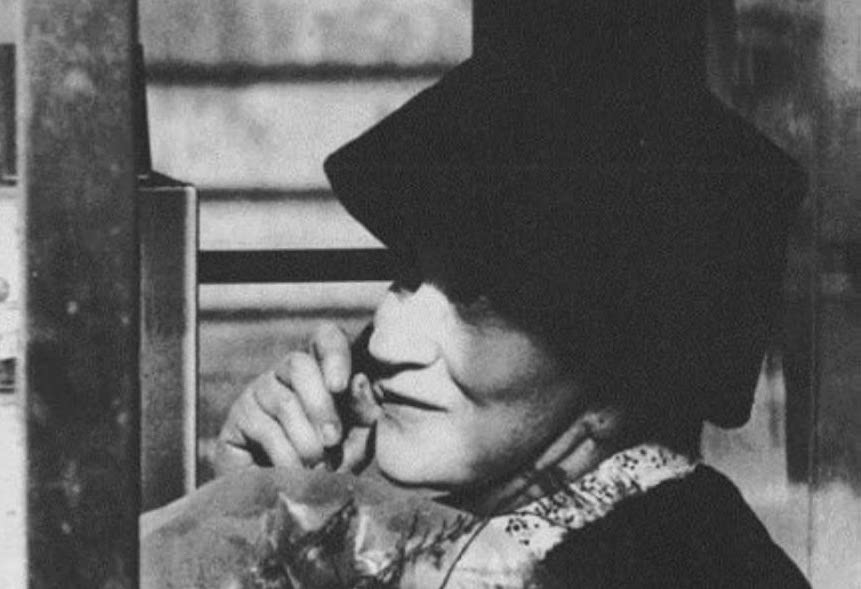
No excerpts available
_____________
Federico Fellini Juliet of the Spirits (1965)
‘Federico Fellini’s 1965 Juliet of the Spirits remains a timeless, major work of a master, a portrait of a dutiful wife plunged into crisis that triggers her spiritual awakening. With Fellini’s own wife, the great Giulietta Masina, as Juliet, and with his unique command of fantasy and spectacle in full force, Juliet of the Spirits, Fellini’s first film in color, is at once an eye-popping display of bravura and a work of compassionate insight. … As various gurus, including an androgynous Eastern mystic (played by pioneering performance artist Valeska Gert) are telling Juliet what to do, she is at once flooded with childhood memories and drawn to the hospitality of her gorgeous blond neighbor Suzy (Sandra Milo), who lives in an Art Nouveau-ish palace with her Greek tycoon lover and whose parties would not be inappropriate for a bordello.’ — Kevin Thomas
Trailer
Excerpt
______________
Alberto Cavalcanti Pett And Pott: A Fairy Story Of The Suburbs (1934)
‘The film, made to advertise domestic telephone sets, is based around two very different families. The Petts are conventional, happy and have children; the Potts are unconventional and unhappy, without children. The Brazilian-born experimental filmmaker Alberto Cavalcanti cast fellow émigré Valeska Gert as a wildly impertinent house servant in this plug for telephones, the first movie he made for British documentarian John Grierson’s General Post Office unit.’ — NYJFF
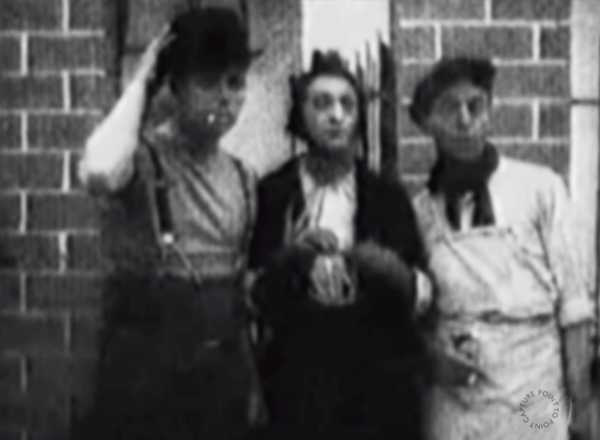
No excerpts available
_____________
Georg Wilhelm Pabst The Threepenny Opera (1931)
‘A little leeway is required here as this big screen adaptation of the famous musical drama written by Bertol Brecht with music by Kurt Weill features very little singing. This was largely due to director G.W Pabst being more interested in the actual story than the singing. He did though keep two of the more popular songs, including Die Moritat von Mackie Messer which you will recognise from its English translation Mack The Knife! Brecht’s 1928 play is actually a reworking of John Gay’s 18th century English opera The Beggar’s Opera yet the cynical look at how corruption exists at all levels of British society remains intact. The central figure, in this version, is well known crook Mackie Messer (Rudolf Forster), the king of the London underground living an amoral life yet is presented as an anti-hero. He marries Polly Peachman (Carola Neher), the daughter of Jonathan Jeremiah Peachum (Fritz Rasp), the man who controls all the beggars in the capital. He and his wife (Valeska Gert) aren’t pleased by this news and when all efforts to make Polly change her mind fail, they resort to dirty tactics to break up the marriage. A fairly simple set-up and one which plays out with surprisingly few twists or turns – one of the most straightforward plots to be found in such a famous work. But that doesn’t stop a wry eye from being cast over its subject, coming through loud and clear regardless of the language it is presented in. As was the custom of the time Pabst shot versions in both German and French but a planned English version didn’t materialise.’ — MB’s Instant Headache
Trailer
the entire film
_____________
Carl Junghans Telle est la vie (1930)
‘Carl Junghans’ film captures the tragic story of an aging laundress, whose drudgery and toil support a licentious and abusive alcoholic husband. Following the wave of social realism in European cinema, the film tries to be true to life, refusing embellishment or sentimentalism. In this way, it distinguished itself from the other films produced during this period in Prague. German social cinema and the cinematic expression of Soviet cinema (some shots are only two frames long) influenced Carl Junghans and are not only present in the style of the film itself, but also in the casting which included personalities who had already played in decisive films that influenced its genesis. The choice of Vera Baranovskaja as the main character is a reference to the sacrifice and the moral integrity of Pudovkin’s Mother. The performance of Valeska Gert, who plays a waitress liberated from the usual confinement of female repertoire, is essential not only for the characterization of the waitress, but also to associate the film with avant-garde ideas and aesthetics and to set it apart from mainstream productions. A few weeks after its initial release in Berlin’s Ufa-Theater, some shots, considered too obviously sexually explicit and indecent, were censored in Czechoslovakia: a customer touching the manicurist’s knee, the lovers’ scene, a man carrying his bedpan, a doctor proposing a price for an abor- tion, a drunken husband heading to the toilet. So far, no original print of the silent version has been found in the world. A 1950’s print – made from a print dating most likely from the first release in Germany in 1930 that included all the censored sequences – was the best source available for the digitization. The Czech intertitles, produced in the 1950s probably for a sound version, are more concise than in the original Czech version that did not survive. All the other existing film materials have been made from this print.We were determined to preserve its integrity throughout the digitization process.’ — Jeanne Pommeau
Excerpt
____________
G.W. Pabst Diary of a Lost Girl (1929)
‘In Diary of a Lost Girl, Louise Brooks plays Thymiane Henning, the innocent young daughter of a pharmacist (Josef Rovensky), who is seduced by her father’s lecherous assistant, Meinert (Fritz Rasp) and later gives birth to an illegitimate child. Reading Thymiane’s diary, her family discovers that Meinhert is the baby’s father, but neither Thymiane nor Meinhert want to marry each other. Thymiane is forced to leave her home, give her baby away to a midwife and is then sent to a strict girl’s reform school, where the school’s Director (Andrews Engelmann) and his wife (Valeska Gert) subject the girls to relentless, regimented, military-like discipline. Thymiane fights back against this oppressive regime and escapes from the school with her friend Erika (Edith Meinhard). Discovering that her baby has died, Thymiane wanders the streets in despair, until she eventually tracks down Erika, who is working in a brothel. Thymiane also ends up working at the brothel, where she begins to rebuild her life and regain her self-esteem. Diary of a Lost Girl is a compelling indictment of the society of the time and while the majority of the film successfully conveys this visually, some of this is conveyed in some rather heavy-handed moralising towards the film’s end. However, Pabst’s directorial skill is evident throughout Diary of a Lost Girl: his close-ups and his staging of the action draw the viewer into the drama, and make them identify with Thymiane throughout.’ — Martyn Bamber
Trailer
the entire film
_____________
Henrik Galeen Alraune (1928)
‘Hanns Heinz Ewers’ grim science-fiction novel Alraune has already been filmed twice when this version was assembled in 1928. In another of his “mad doctor” roles, Paul Wegener plays Professor Brinken, sociopathic scientist who combines the genes of an executed murderer with those of a prostitute. The result is a beautiful young woman named Alraune (Brigitte Helm), who is incapable of feeling any real emotions — least of all guilt or regret. Upon attaining adulthood, Alraune sets about to seduce and destroy every male who crosses her path. Ultimately, Professor Brinken is hoist on his own petard when he falls hopelessly in love with Alraune himself. Alraune was remade in 1930, with Brigitte Helm repeating her role, and again in 1951, with Hildegarde Knef as the “heroine” and Erich von Stroheim as her misguided mentor.’ — H.O.W.
Trailer
the entirety
______________
Jean Renoir Nana (1926)
‘Renoir’s second work, Nana, is a silent film that tells the story of the rise and fall of a young actress. After trying unsuccessfully to make it big on the Parisian theater scene, Nana uses her powers of seduction to break into society, becoming a vicious courtesan supported by rich lovers.’ — collaged
Opening scene
the entire film
_____________
Georg Wilhelm Pabst The Joyless Street (1925)
‘Joyless Street (Die freudlose Gasse), a film based on the novel by Hugo Bettauer and directed by Georg Wilhelm Pabst in Germany, is one of the first films of the New Objectivity movement. Greta Garbo stars in her second major role. The film is often described as a morality story in which the ‘fallen woman’ suffers for her sins, while the more virtuous is rewarded. The film’s sets were designed by the art directors Otto Erdmann and Hans Sohnle.’ — Lance Eaton
the entirety
_____________
Hans Neumann Wood Love (1925)
‘Mistaken identity, unrequited love, and the supernatural are combined in Shakespeare’s classic set in the woods of Greece on a moonlit night.’ — IMDb
Excerpt
*
p.s. RIP Peter Straub ** _Black_Acrylic, Thanks, Ben. Ooh, that Dopplereffekt album, great call. ** T, Greetings, sire. I love that Broken Social Scene album. To me they never did anything else remotely as good, but, boy, it’s great. Same with that first Red House Painters album. I almost put ‘Horse Rotorvator’ on mine and probably should have. ‘As You Are’ … no, I don’t think so. Cool, I’ll find it. Thanks, buddy. ** politekid, Yay, Oscar! Howdy-doo! What an excellent list, no surprise. I haven’t listened to that Weather Report album in ages, wow. I’ll retry it. Your list is so eclectic = great. I thought about putting FSOL’s ‘Lifeforms’ on mine but I thought it might sound really dated now. Nice Fahey. ‘Bakesale’, interesting. I could go on and on. ‘Uncle Meat’! Why wasn’t ‘Tilt’ on mine, hm. Thanks so much, dude. How are you? What’s going on? xo. ** Sypha, Hi. Fascinating list. I would have put ‘Juju’ for Siouxie. ‘A Bell is a Cup’, interesting Wire pick. Thanks, James, Did you get to the bookstores? ** Jack Skelley, Hey, JJ. The Dickies are still playing? Wow, that’s kind of great. ‘Dawn of The Dickies’ is such a great record. I almost included it. About half+ of their first two albums was written by members of The Quick. Salut! ** Misanthrope, Sorry about the return of the horrible headaches. It’s probably because you typed the words The Doors. ** David Ehrenstein, Thank you, David. I will find out what that Nic De Caro album is. ** Dominik, Hi!!! Thank you, thank you for your list. The first Placebo album is my favorite of theirs by a million miles. Trump and Putin it is. We have two feet, so we could snuff them simultaneously. I’m pretty sure that an amusement park called Blood Sugar Sex Magik would be a gigantic success. Oh, hm, I think I’d turn the Glenn Branca album into an amusement park, although it would be even better as a haunted house attraction. Ha ha, good love yesterday. Cheered me right up. Love playing the albums on everyone’s lists from yesterday at the same time, recording whatever that sounded like, and releasing it under his name as an album called ‘Love’, G. ** Dr. Kosten Koper, Well, hello! What a great thing to have you here and chime in with your favorites! Everyone, If you’re not already a listener of Kosten Koper’s amazing podcast/show L’Etranger, I so highly recommend you start being one for the sake of your everything. Here’s the newest episode. There’s a bunch on your list that I don’t know, at least by name, at least when insufficiently coffeed aka now, And I’ll investigate. Thank you so much! ** fervorxo, Hi, fervorxo. Thanks a bunch. Narrowing the GbV oeuvre to one album was very not easy, and I’m speaking as someone who knows every single one of their albums basically by heart. Freak! Fine list. I don’t know why I didn’t put that Xiu Xiu on mine. Interesting Liturgy pick. Great, thanks again! ** Tosh Berman, Hi. Oh, man, feel much better. It’s completely weird to me that we here have been wide open with no restrictions for ages now and the cases keep falling whereas in other countries the same policy has resulted in the opposite. What an excellent list. Happy to see Tom Recchion on there. I almost said, ‘No Sparks???!!!’, but then I saw your follow up. ‘Praying’ that your heatwave dies a sudden death. ** Steve Erickson, Hi. interesting list, with many surprises (to me). ‘Lorca’, nice. I almost put ‘Starsailor’ on mine. ‘Paid in Full!’ I came close to putting ‘Maggot Brain’ on mine. Picking one Chic album was tough. That Quick album is a compilation of demos and live tracks from their later years. They were an infinitely great band after ‘Mondo Deco’, and it’s an absolute crime that they never got to record their amazing later songs properly. Still, the album’s great. Re: Bow Wow Wow: The fact that that album is an act of puppetry and is entirely about that act of puppetry and its creepiness is why it’s such an incredible album to me. Annabella and her current faux-BWW backup band was performing that album in its entirety live as recently as two years ago, so I think she’s okay with it. ** Damien Ark, Hey, Damien! I meant, yes, the album that collects all the ‘Disintegration’ loops. Pretty impressive list there, dude. Quite a few I don’t know and am scribbling the names of for future study. Thanks so much! You good? ** Toniok, Hi, Tonio! Awesome to see you, pal! Super sweet stuff on your list. ‘Unhalfbricking’! And why I didn’t include ‘Then Play On’ on mine is a mystery. Or GP, although I would have put ‘Grievous Angel’. Etc. Thanks a ton, man, and I hope your world is treating you right. ** Nightcrawler, Hi! I don’t paint but painting in a heatwave is scary to think about for some reason. I’ve never heard of Tom Griesgraber, and I am definitely going to hunt that album. Or Golden Rain either actually. Cool, thanks for the feeding. ** Bill, Hi. I read that you guys broke records, but how does one trust things one reads anymore, I ask you. All kinds of goodies in your compendium. Art Bears! DNA! (I would put Arto Lindsay in a top 5 living guitarists list). That’s a great Fred Frith album. Biggest surprise on your list: English Beat (psst, I like that album too). ** OneTime, Hi, OneTime! Welcome to here! I love that your list ranged from Townes Van Zant to World’s End Girlfriend to Paris Hilton! Awesome, thanks so much. How’s stuff? ** Brendan, B-man! I think the word epic would also apply to your array, sir. Wow. It makes me realise my list was sorely lacking in Metal which surprises me. What’s wrong with me?! It would be too much greatness for one head if the head wasn’t yours. Awww. ** Robert, Hi, Robert! Fahey is great. It was a tough choice. I know most of yours, and dig them too. I’ve been avoiding King Gizzard and the Lizard Wizard, and I don’t know why. I think it’s their name. I’ll dig in. On the other hand, Microtonal Banana? I have to hear that, clearly. Thanks, buddy. Yeah, but the time consumed adds wonders to my future musical knowledge, so yay. ** Dalton, Hi, Dalton! Thanks a bunch for entering here and sharing your stuff. I don’t know a good half ofd the artists on your list, but I will pronto. Excellent day to you! ** Okay. I decided to restore this post about proto-punk acting icon Valeska Gert in case you don’t already know her. See you tomorrow.




 Now available in North America
Now available in North America 
Missed yesterday’s post’s PS deadline so thought I’d pop my fav albums here cuz felt like sharing
To Be Kind – Swans
*Attahk – Magma
Part the Second – maudlin of the Well
Middle of Nowhere – Hanson
Slave to the Rhythm – Grace Jones
Young Americans – David Bowie
The Wall – Pink Floyd
The Hobbit (1977) OST – Glenn Yarborough
Witchcraft – Coven
Gris Gris – Dr John
It’s All Crazy! It’s All False! It’s All a Dream! It’s Alright – mewithoutYou
Who Will Survive, and What Will Be Left of Them? – Murder By Death
Scott Walker – Scott 3
Excitable Boy – Warren Zevon
Native Construct – Quiet World
Book 1: Dr Breacher – Others by No One
Shiny Eyed Baby – Bent Knee
Berlin – Lou Reed
Brave – Marillion
Fragile – Yes
David Grey – White Ladder
Tracey Chapman S/T
*No World for Tomorrow – Coheed and Cambria
*Hubardo – Kayo Dot
*Frances the Mute – The Mars Volta
*Act V: Hymns with the Devil in Confessional – The Dear Hunter
* = all time favorite bands and choosing only one album feels like a crime but that’s the criteria lol
<A HREF="https://www.youtube.com/watch?v=kf7RWcJFAsA
"?Tea For Two
Hi!!
Yeah, the first Placebo album has some magic that’s hard to beat. I didn’t know “Symphony No. 1 (Tonal Plexus),” but I’ve just listened to it, and indeed – it’d be a thrilling experience as a haunted house attraction. It is as a record too. The kind you start listening to, and then suddenly it ends, and you can’t believe it’s been almost an hour. At least it pulled me into such a flow today. (Which I’m really grateful for because my brain is in this weird, vaguely restless state today otherwise.)
Love’s record would be one for true collectors. It’d take ages, would maybe even be impossible, to dig back to all the individual components. Love proofreading this message and reading “dig back” as “dick bag” and wondering for a second what the fuck he meant, Od.
I actually quite like Broken Social Scene’s self-titled and Hug of Thunder, but that first album is just *so* good. And Coil has so many good albums it’s hard to narrow it down to one. Horse Rotorvator has a special place for me because it was the first album by them I heard in high school. Completely changed me as a person. I probably wouldn’t be on this blog without it.
Dennis, Hahahahaha. Right? Nah, the headache came before then. A day before. It predicted my typing that. 😀
But it’s gone now. So maybe…it eliminated it. Harumph.
My mom’s MRI went okay. However, she didn’t realize she’d be stuck in a tube for 45 minutes, hahaha. She was pissed. “Never again! I’ll just died from whatever!” Hehehe.
What a fascinating figure Valeska Gert! For whatever reason, I couldn’t download some of the images on your blog. But I’ll get back to it. There is always a visionary who is almost a futurist in that they become connected with contemporary times decades later. I would love to read a bio on her. I may have something on her through my books about Germany of that period. My grandmother, my mom’s mother, was very much part of the Hamburg scene, with respect as a teenager who performed in cabarets. She left home as a teenager to travel the world as a performer in a circus. Romantic life, and then she became a butcher at the Hollywood Ranch Market, around the time Man Ray lived across the street. Surely he bought meat from her????
I’m going to do my own list of albums for my blog shortly. I have this strange habit of becoming a fan of an artist/band decades later. If I live long enough, and I’m way in my 80s, I may get into Harry Styles big time!
Valeska Gert is my new hero! I’ve just added Eight Hours Are Not A Day to my DVD rental list and look forward to watching it in my new flat, whenever that may be.
Re the new flat, things may actually be moving forward now. Not to be the boy who cried wolf, but I actually spoke to the solicitor a couple of times last night and a document is in the post that I need to sign. Once that is done then we might just be able to get this process underway. This time next week I’m hoping to be in a very different spot.
Happy to be the metal guy here, D. I’ve truly found my place.
Did you get the fashion stuff I emailed to you?
B
I missed this post earlier. What a fascinating character, so Berlin. I love those Berlin bars decorated with crazy junk. There used to be places like that in San Francisco too. But they’re kind of disappearing everywhere, sadly.
After I posted my list yesterday, I kept remembering items that should be on it, haha.
Re: English Beat. I was a huge ska fan, loved dancing at ska nights in bars. There was an excellent Specials show here maybe 15 years ago, and there was a lot of dancing in the aisles.
Bill
One reason I’m partial to A KISS IN THE DREAMHOUSE is because it includes “Melt!” (my favorite Banshees track). JUJU of course is very good as well: esp. like “Monitor” off that one. Weird that I neglected to include Whitehouse yesterday… would probably say Asceticists 2006 though BIRD SEED a possibility as well.
Yeah, I did get to the bookstore yesterday, but didn’t go too crazy: mainly just a new publication of Budge’s translation of THE EGYPTIAN BOOK OF THE DEAD, plus a 300 piece jigsaw puzzle featuring Edward Gorey’s dancing cat drawings. Today we went to the local CD store but again I didn’t go overboard, mainly because unlike previous years they didn’t have a lot I was looking for: I ended up getting Haim’s WOMEN IN MUSIC PT. III, Slayer’s LIVE UNDEAD (a last minute impulse buy), a used copy of Nada Surf’s LUCKY, and Taylor SWift’s 1989 (long story about that, won’t bore you with it today though ha ha). I also got a secondhand copy (in good condition) of the Centipede Press version of Thomas Tryon’s THE OTHER, which I’ve been looking for for awhile now. All that for like $55.
hi dc!! you are more than welcome, of course. i’m kicking myself looking back at all the stuff i missed out. Sebadoh could also have been _III_, _Harmacy_ or Sentridoh’s _Winning Losers_ depending on my mood. i was lucky enough to be introduced to Fahey by my guitar teacher when i was about 13, along with Velvet Underground, Paco de Lucia, Ry Cooder &c. — he was also a big believer in ripping CDs. and the Weather Report holds a special place for me cos it really introduced me to free jazz at around the same age. i’d listened to _Heavy Weather_ and Return to Forever, and thought they were fine, catchy, but hearing _ISTBE_ played at dangerously loud volumes in a speeding car at night rewired my brain or something.
things my end are still rough. (why are things my end always rough when i’m telling you about them? how dull that must be for you.) we’re trying to sort my grandma out in a home, partly cos of my phd but partly cos we just can’t look after her safely anymore… so all my family’s insanities (inc. my own) are exaggerated as a result. we’ve found a nice place at least — thank god, cos visiting some of those places was fucking awful, turns out Beckett was making documentaries &c. &c.
things personally are looking better, though! once i’ve worked out exactly what doing a phd entails. no-one seems to know. but it doesn’t start for somewhere between 2-4 weeks, so i’m reading a bunch of completely unrelated books while i still can; knee-deep in _The Magic Mountain_ atm. i’m still taking a run up for the big fiction project — i’ve been doing research (well all reading is research, but targeted research) and i think i’ve come up with a good engine, which is always the trickiest part for me — some reason why it all keeps going. if a phd has to take the backseat while i jump into that, i don’t think i’ll mind.
(and credit where it’s due — _Locus Solus_ and _Edwin Mullhouse_ had been on my radar-ish but your list of books got me to rip into them pronto, and both were genuine unspeakably wowzer books now holding permanent lodgings in my brain. moon-sized thanks to you, and i’m sure i’ll have more to send as i work my way through the others.)
what about your end? have you been/are you up to anything good?